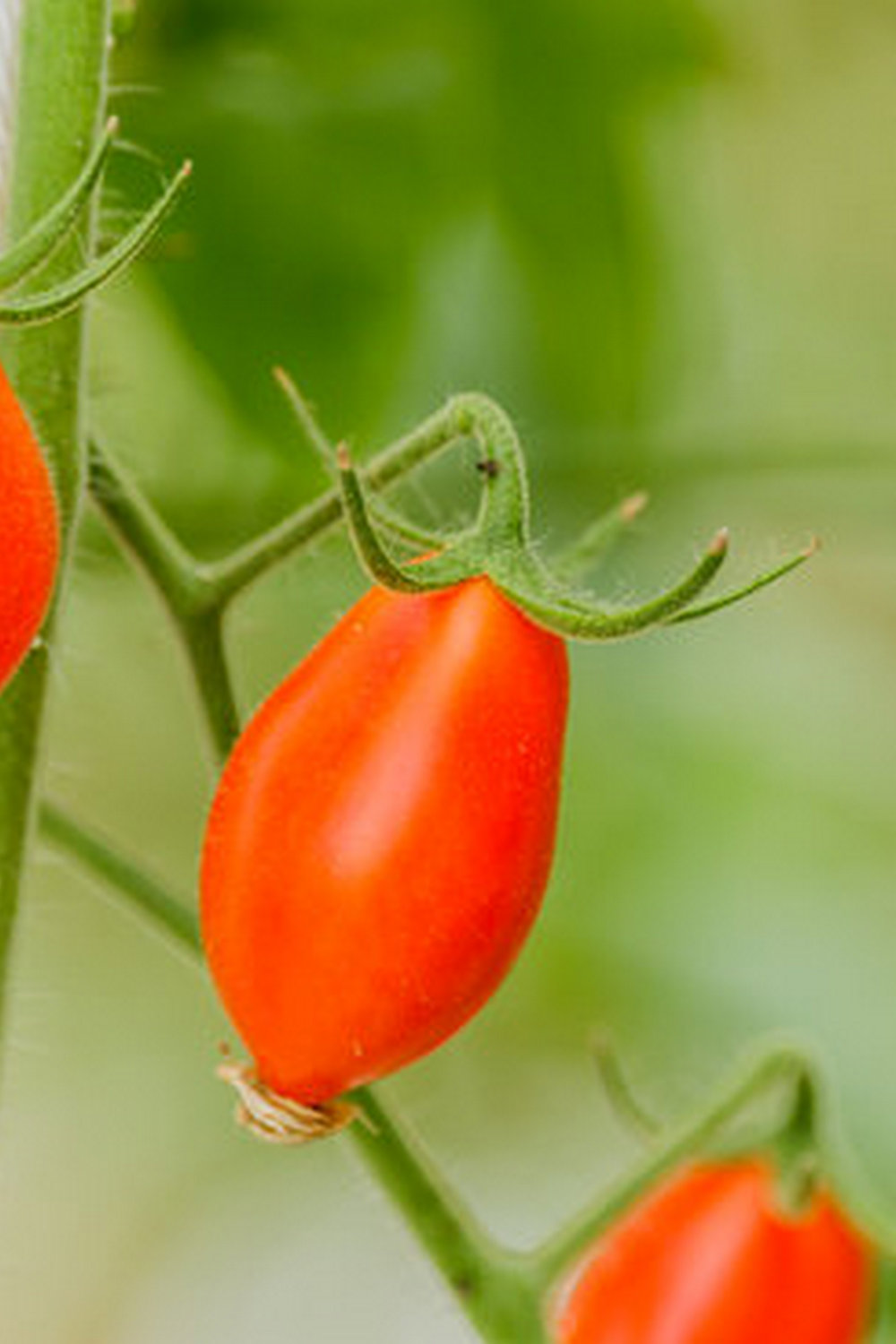Are you looking to bring the joy of gardening into your apartment living space? Apartment balcony vegetable gardening is a great way to enjoy fresh produce right at your fingertips, even in a limited urban setting. In this article, we will explore the numerous benefits of creating your own vegetable garden on your balcony, from providing a sustainable food source to adding beauty and tranquility to your outdoor space.
One of the key advantages of apartment balcony vegetable gardening is the ability to grow your own nutritious and organic vegetables without requiring a full-size backyard. By utilizing the available space on your balcony, you can cultivate a variety of delicious vegetables that not only save you money but also promote a healthier lifestyle. Imagine having access to freshly grown tomatoes, peppers, herbs, and more just steps away from your kitchen.
Moreover, apartment balcony vegetable gardening allows you to connect with nature and experience the therapeutic benefits of nurturing plants. Tending to your garden can be a relaxing and rewarding activity that reduces stress and boosts mental well-being. Additionally, growing your own vegetables can contribute to environmental sustainability by reducing carbon footprint associated with transportation and packaging of store-bought produce. Stay tuned as we delve into valuable tips for successful balcony gardening in the upcoming sections.
Finding the Right Location
When it comes to apartment balcony vegetable gardening, one of the most crucial aspects is finding the right location for your garden. The success of your plants will heavily depend on the amount of sunlight they receive, so choosing a spot on your balcony that gets adequate sunlight is vital.
Most vegetables require at least 6-8 hours of sunlight each day for optimal growth and yield. Observing your balcony throughout the day to determine which area receives the most sunlight can help you decide where to place your containers or pots.
Once you’ve identified the sunniest spot on your balcony, consider other factors such as wind exposure and temperature fluctuations. Vegetables thrive in well-ventilated areas with consistent temperatures, so try to avoid placing your garden in drafty or extremely hot locations. Additionally, if you live in an area with strong winds, consider adding a windbreak like a trellis or a screen to protect your plants from damage.
In some cases, space constraints may limit where you can place your vegetable garden on your apartment balcony. If space is limited, vertical gardening techniques can be utilized to maximize the available area. Hanging baskets, wall-mounted planters, and tiered shelving units are excellent options for growing vegetables in a small space. With careful planning and consideration of these factors, you can create a thriving apartment balcony vegetable garden that yields fresh produce right outside your door.
| Aspect to Consider | Recommendation |
|---|---|
| Sunlight Exposure | Choose a spot with at least 6-8 hours of sunlight per day. |
| Wind Exposure | Avoid drafty locations; consider adding windbreaks like trellises. |
| Space Constraints | Utilize vertical gardening techniques like hanging baskets and wall-mounted planters. |
Container Selection
When it comes to apartment balcony vegetable gardening, choosing the right containers is crucial for the success of your garden. There are various types of containers available that can be used to grow vegetables on a balcony. One popular option is traditional clay pots, which are not only aesthetically pleasing but also provide good drainage for your plants. Additionally, plastic or resin containers are lightweight and easy to move around, making them a practical choice for apartment dwellers.
Another innovative container option for balcony gardening is vertical planters. These space-saving containers allow you to maximize the limited space on your balcony by growing vegetables vertically. Hanging baskets are also a great choice for adding a splash of greenery to your apartment balcony while growing herbs or small vegetables. Whichever type of container you choose, make sure it has proper drainage holes to prevent waterlogging and root rot.
For those looking for a more sustainable approach to apartment balcony vegetable gardening, consider using recycled materials such as old buckets, milk jugs, or wooden crates as planters. Not only will this reduce waste by repurposing items you already have at home, but it can also add a charming DIY touch to your balcony garden.
Remember to choose containers that are large enough for the mature size of the plants you wish to grow and place saucers underneath them to protect your balcony from water damage.
| Container Type | Advantages |
|---|---|
| Traditional Clay Pots | Aesthetically pleasing and provide good drainage |
| Vertical Planters | Space-saving option for maximizing limited balcony space |
| Hanging Baskets | Adds decorative touch while growing herbs or small vegetables |
Soil and Fertilizers
When it comes to apartment balcony vegetable gardening, choosing the right soil and fertilizers is essential for the optimal growth of your plants. The limited space and resources available in a balcony garden make it even more crucial to provide your vegetables with the best possible environment to thrive. Here are some recommendations to ensure that your plants reach their full potential:
- Choose a high-quality potting mix: Look for a potting mix specifically formulated for container gardening, as these mixes provide the proper drainage and nutrients necessary for healthy plant growth.
- Consider adding amendments: Depending on the type of vegetables you plan to grow, you may need to add amendments such as compost, perlite, or vermiculite to improve soil structure and fertility.
- Use organic fertilizers: Organic fertilizers are a great choice for apartment balcony vegetable gardening because they provide slow-release nutrients without the risk of chemical buildup in a confined space. Look for options like compost tea, fish emulsion, or seaweed extract.
In addition to selecting the right soil and fertilizers, it’s important to monitor your plants’ nutrient needs throughout the growing season. Regularly check for signs of nutrient deficiencies such as yellowing leaves or stunted growth, and adjust your feeding schedule accordingly. By providing your balcony garden with the proper soil and nutrients, you’ll set yourself up for a bountiful harvest of fresh, homegrown vegetables.
- Test your soil: Consider getting a soil test kit to determine the pH levels and nutrient content of your potting mix. This information will help you make informed decisions about which fertilizers to use and how to adjust your soil composition.
- Follow recommended feeding schedules: Different vegetables have varying nutrient requirements at different stages of growth. Be sure to follow guidelines on when and how often to feed your plants with fertilizers to avoid over – or under-fertilization.
- Rotate crops: To prevent depletion of specific nutrients in the soil, consider rotating your crops each season. Planting different types of vegetables in different containers can help maintain soil health and fertility over time.
By implementing these recommendations for soil selection and fertilization in your apartment balcony vegetable garden, you’ll be well on your way to enjoying a thriving oasis of fresh produce right outside your door. Remember that good soil health is the foundation of a successful garden, so investing time and effort into creating an optimal growing environment will pay off in abundant harvests throughout the year.
Choosing the Right Vegetables
When it comes to apartment balcony vegetable gardening, choosing the right vegetables is essential for a successful harvest. With limited space and sunlight, selecting the most suitable plants can make all the difference in the yield and quality of your produce. Here are some tips on selecting which vegetables are best suited for balcony gardening:
- Consider the Size: Opt for compact varieties that don’t require a lot of space to thrive. Vegetables like cherry tomatoes, peppers, and dwarf varieties of beans or peas are perfect for small balcony gardens.
- Choose High-Yield Plants: Select vegetables that produce a high yield in a small amount of space. Herbs like basil, mint, or chives are great options as they continue to grow after harvesting, providing multiple harvests throughout the season.
- Pick Fast-Growing Vegetables: To maximize your limited space, choose vegetables that mature quickly. Radishes, salad greens like lettuce or arugula, and microgreens are excellent choices for balcony gardening as they have a short growing season.
When planning your apartment balcony vegetable garden, also consider your personal preferences and what vegetables you enjoy eating regularly. Don’t forget to factor in the amount of sunlight your balcony receives throughout the day as different plants have varying light requirements. By carefully selecting the right vegetables for your balcony garden, you can enjoy fresh produce right outside your door with minimal effort.
- Tomatoes
- Peppers
- Herbs (basil, mint, chives)
- Lettuce
- Arugula
- Radishes
Maintenance Tips
Watering Tips
When it comes to apartment balcony vegetable gardening, one of the most crucial aspects of maintenance is proper watering. Due to the limited space and containers used in balcony gardens, plants can dry out more quickly than those in traditional ground gardens. It’s essential to check the moisture level of the soil daily, especially during hot weather.
Water your vegetables thoroughly when the top inch of soil feels dry to the touch. However, be careful not to overwater, as this can lead to root rot and other issues.
Pruning Techniques
Pruning is another important aspect of maintaining a thriving apartment balcony vegetable garden. Regular pruning helps promote healthy growth, prevents overcrowding of plants in limited space, and enhances air circulation around the plants. Use clean gardening shears or scissors to trim off dead or yellowing leaves, flowers that have finished blooming, or any leggy stems. Make sure to prune your vegetables regularly but be careful not to remove too much foliage at once, as this can stress the plants.
Pest Control Measures
Just like any other garden, apartment balcony vegetable gardens are susceptible to pests that can damage your crops. Implementing pest control measures is essential for safeguarding your plants and ensuring a bountiful harvest. One effective method is using natural remedies like neem oil spray or insecticidal soap to deter common pests such as aphids or spider mites.
You can also introduce beneficial insects like ladybugs or lacewings that feed on harmful pests. Regularly inspect your plants for signs of pest infestations and take action promptly to prevent further damage.
Harvesting and Using Your Produce
Growing your own vegetables on your apartment balcony can be a rewarding and fulfilling experience. Not only do you get to enjoy the freshest produce possible, but you also have the satisfaction of knowing that you grew it yourself. When it comes time to harvest your crops, there are endless possibilities for using the vegetables in delicious dishes. From salads to stir-fries, the options are only limited by your imagination.
One great way to use the vegetables you grow on your balcony is by incorporating them into simple yet flavorful salads. Freshly picked cherry tomatoes, crisp cucumbers, and vibrant bell peppers can add a burst of color and taste to any salad. You can also experiment with different herbs like basil, mint, or parsley to create unique flavor combinations. Drizzle with a homemade vinaigrette using olive oil from your pantry and some balsamic vinegar for a refreshing dish.
Another idea for using the vegetables from your apartment balcony garden is to whip up a delicious stir-fry. Sauté some freshly harvested snow peas, broccoli florets, and sliced carrots in a hot pan with garlic and ginger for a quick and nutritious meal. Add in some protein like tofu or chicken, along with soy sauce and sesame oil for an added depth of flavor.
Serve over rice or noodles for a satisfying dinner that showcases the flavors of your homegrown vegetables. Experiment with different vegetable combinations and seasonings to keep things exciting in the kitchen.
Lastly, you can use the vegetables from your apartment balcony garden to make homemade salsas, sauces, or even pickles. Try making a fresh salsa with diced tomatoes, onions, jalapeños, and cilantro for a zesty topping for grilled fish or tacos. Or simmer down some harvested tomatoes with garlic and herbs to create a flavorful pasta sauce.
If you have an abundance of cucumbers or zucchinis, pickling them can be a fun way to preserve their freshness for longer consumption. The possibilities are endless when it comes to using the vegetables you grow in your apartment balcony vegetable garden – get creative and enjoy.
Success Stories
When it comes to apartment balcony vegetable gardening, success stories can serve as a great source of inspiration for aspiring urban gardeners. These real-life examples prove that even with limited space and resources, it is possible to create thriving vegetable gardens right on your balcony. Whether it’s growing herbs, tomatoes, or peppers, these success stories showcase the possibilities of apartment balcony vegetable gardening.
One such inspiring tale is that of Sarah, a city dweller who transformed her small balcony into a lush vegetable paradise. By carefully selecting the right containers and vegetables suited for her space, she was able to enjoy a bountiful harvest of fresh produce. With dedication to regular maintenance and proper care, Sarah’s balcony garden flourished throughout the season, providing her with a sense of fulfillment and connection to nature.
Another remarkable success story comes from Mark, who turned his passion for cooking into a balcony gardening adventure. By experimenting with different vegetables and herbs, he not only elevated the flavors of his dishes but also discovered a new hobby that brought him joy and satisfaction. Mark’s commitment to learning about soil health, fertilization techniques, and pest control led to the flourishing of his mini urban farm in the heart of the city.
Frequently Asked Questions
Can You Grow Vegetables on an Apartment Balcony?
Yes, it is possible to grow vegetables on an apartment balcony. With the right conditions like sunlight, soil, and water, many vegetables can thrive in pots or containers on a balcony.
What Vegetables Grow Best in Balcony Pots?
Some vegetables that grow best in balcony pots include cherry tomatoes, peppers, lettuce, and herbs like basil and parsley. These plants are well-suited for smaller spaces and can be easily grown in containers.
What Vegetables Can You Grow in an Apartment?
In an apartment, there are several vegetables that you can grow indoors such as leafy greens (lettuce, spinach), microgreens, radishes, carrots (with a deep enough container), and herbs like mint, cilantro, and chives. These plants do not require a large outdoor space to thrive.

If you’re looking to get into vegetable gardening, or are just looking for some tips on how to make your current garden better, then you’ve come to the right place! My name is Ethel and I have been gardening for years. In this blog, I’m going to share with you some of my best tips on how to create a successful vegetable garden.





